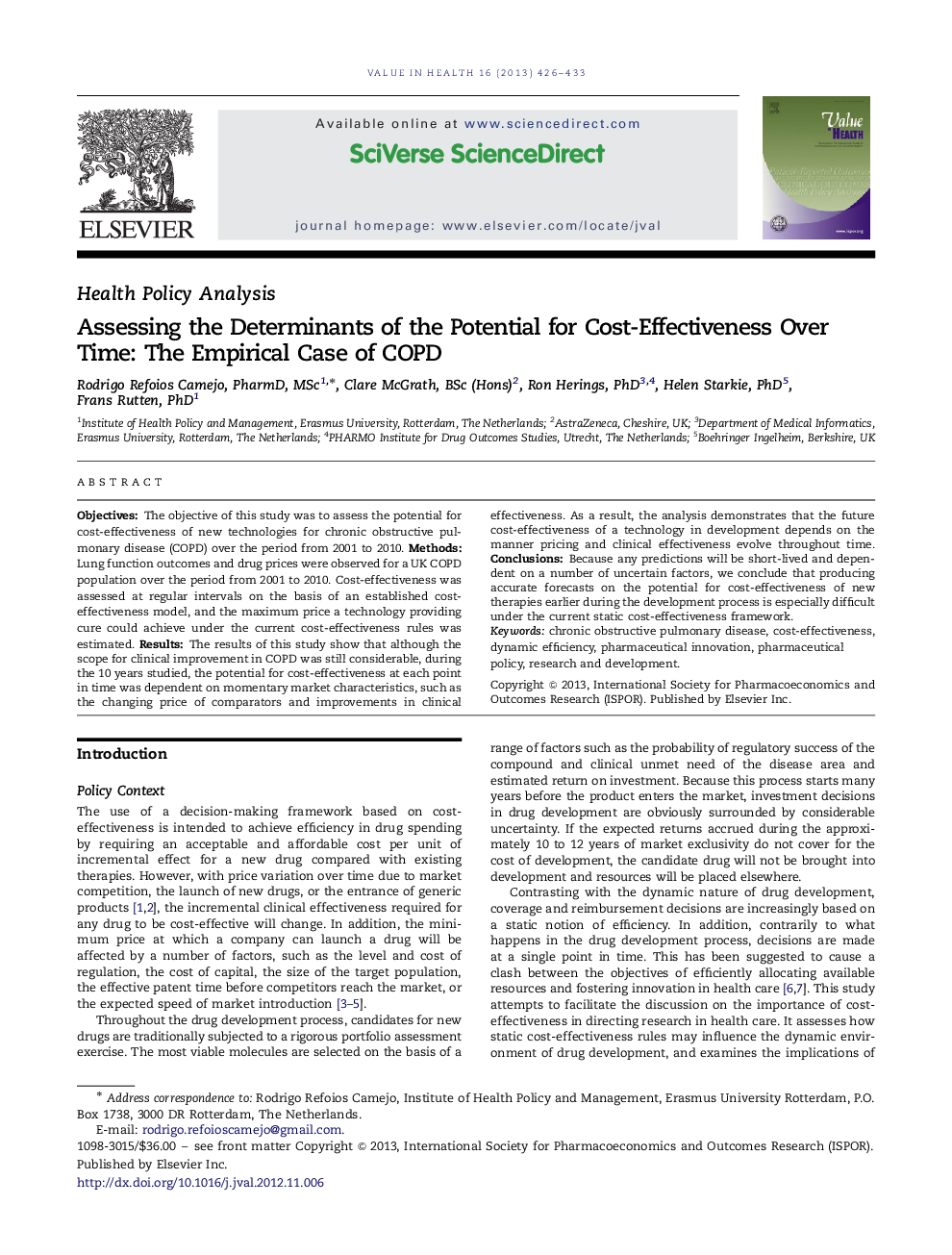| Article ID | Journal | Published Year | Pages | File Type |
|---|---|---|---|---|
| 989789 | Value in Health | 2013 | 8 Pages |
ObjectivesThe objective of this study was to assess the potential for cost-effectiveness of new technologies for chronic obstructive pulmonary disease (COPD) over the period from 2001 to 2010.MethodsLung function outcomes and drug prices were observed for a UK COPD population over the period from 2001 to 2010. Cost-effectiveness was assessed at regular intervals on the basis of an established cost-effectiveness model, and the maximum price a technology providing cure could achieve under the current cost-effectiveness rules was estimated.ResultsThe results of this study show that although the scope for clinical improvement in COPD was still considerable, during the 10 years studied, the potential for cost-effectiveness at each point in time was dependent on momentary market characteristics, such as the changing price of comparators and improvements in clinical effectiveness. As a result, the analysis demonstrates that the future cost-effectiveness of a technology in development depends on the manner pricing and clinical effectiveness evolve throughout time.ConclusionsBecause any predictions will be short-lived and dependent on a number of uncertain factors, we conclude that producing accurate forecasts on the potential for cost-effectiveness of new therapies earlier during the development process is especially difficult under the current static cost-effectiveness framework.
